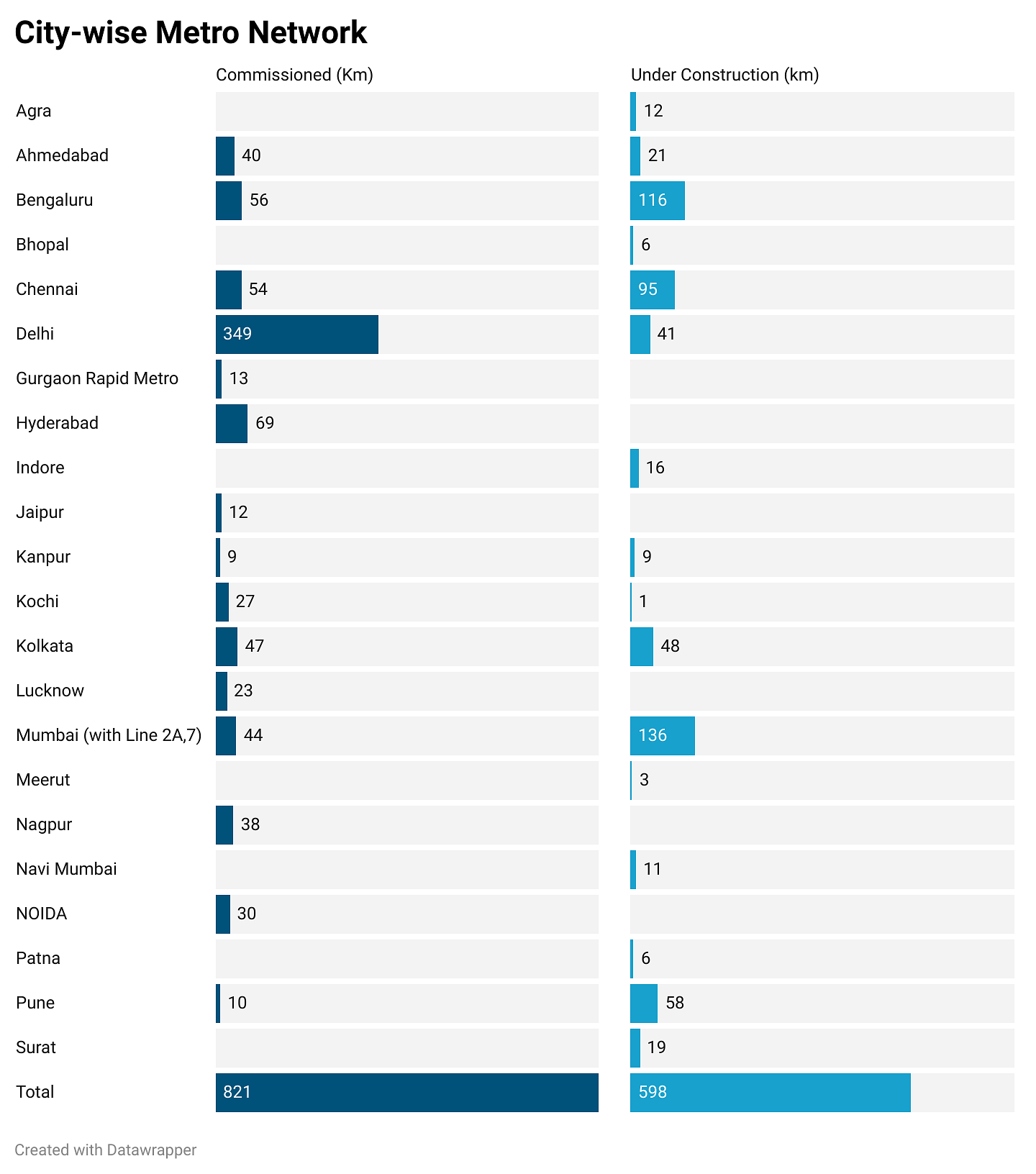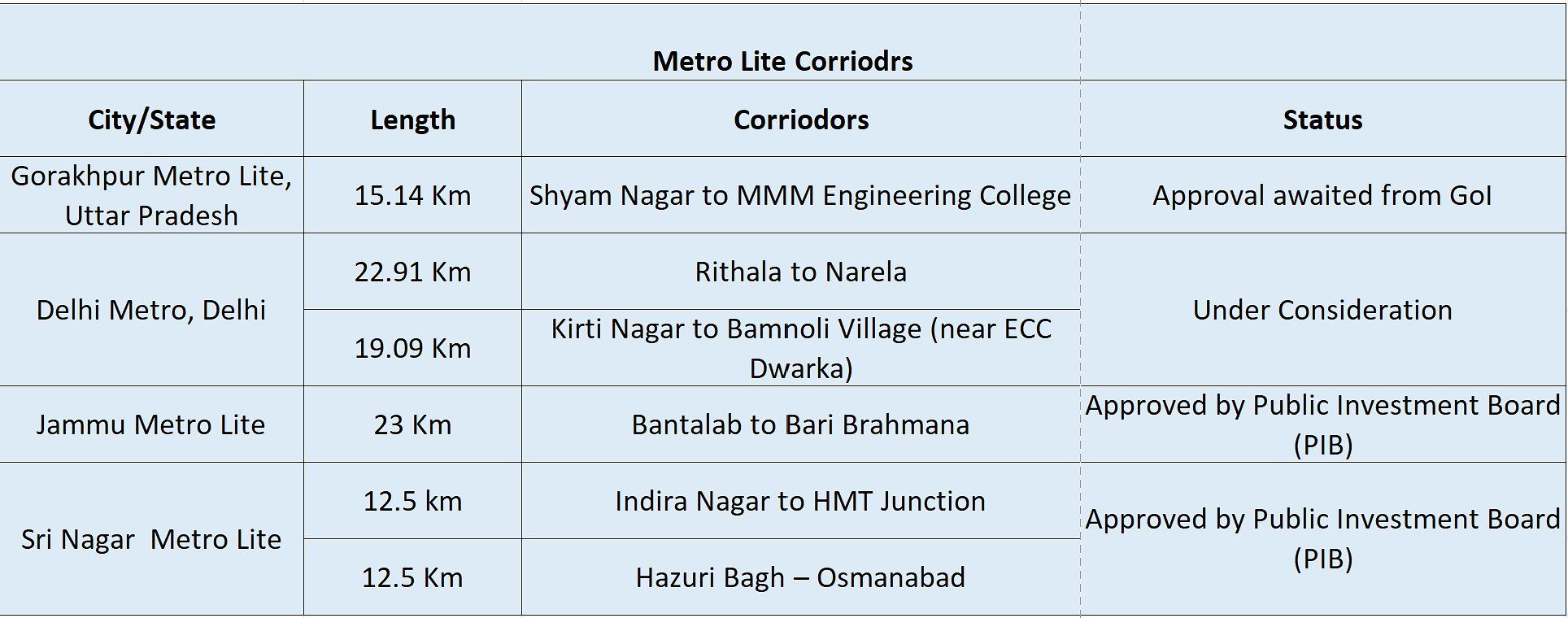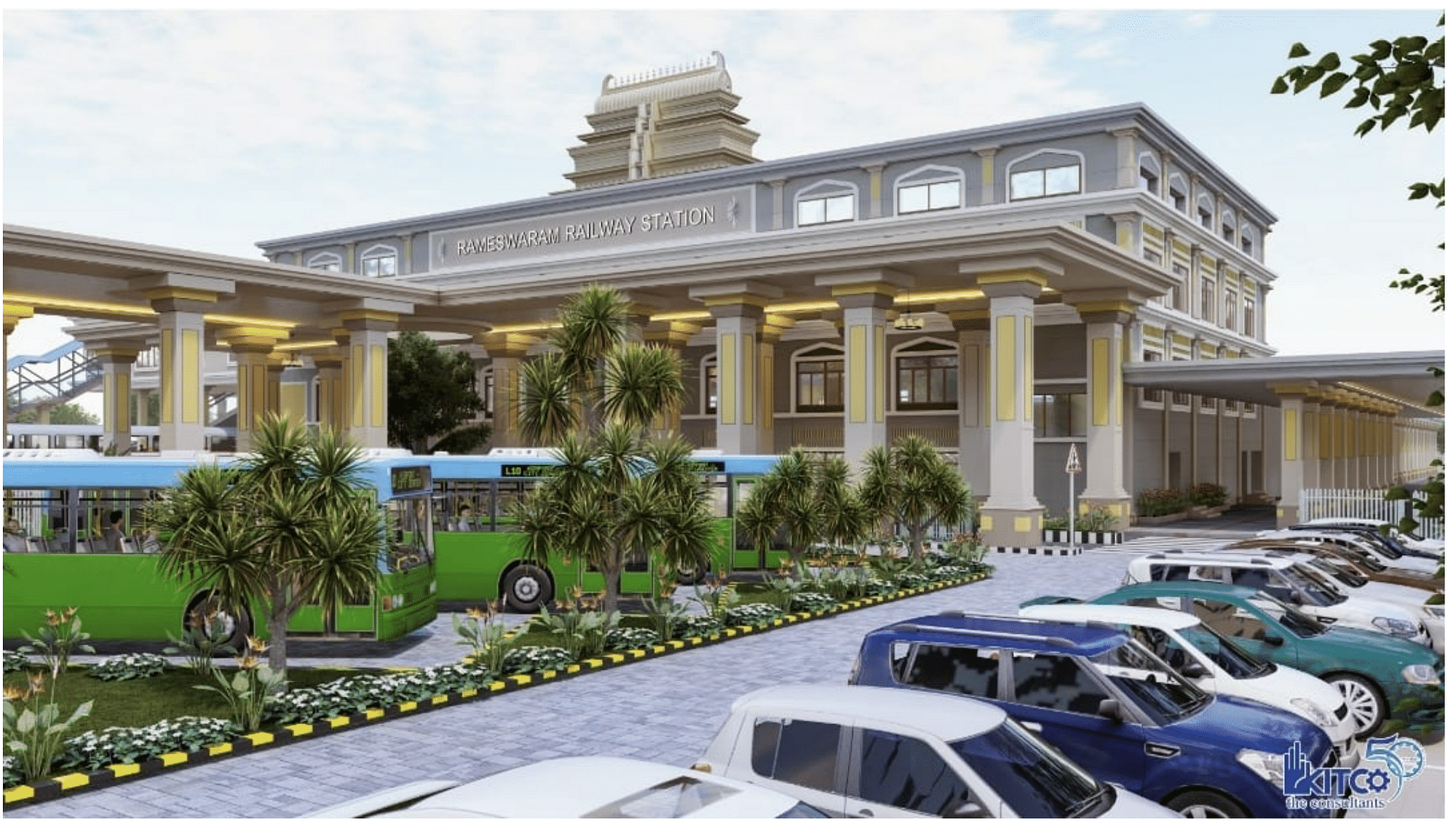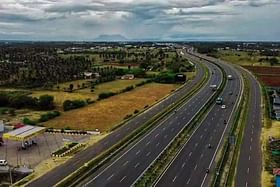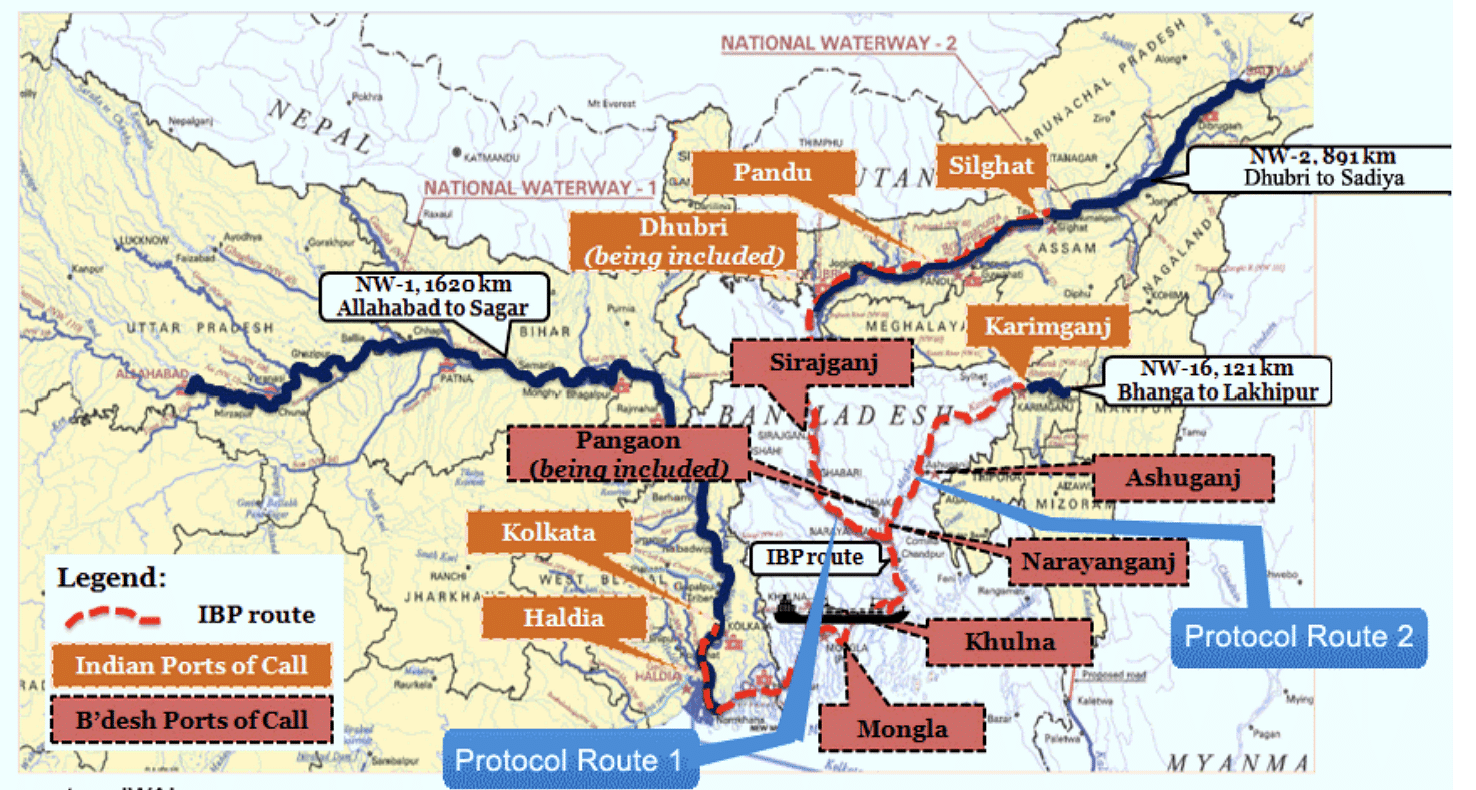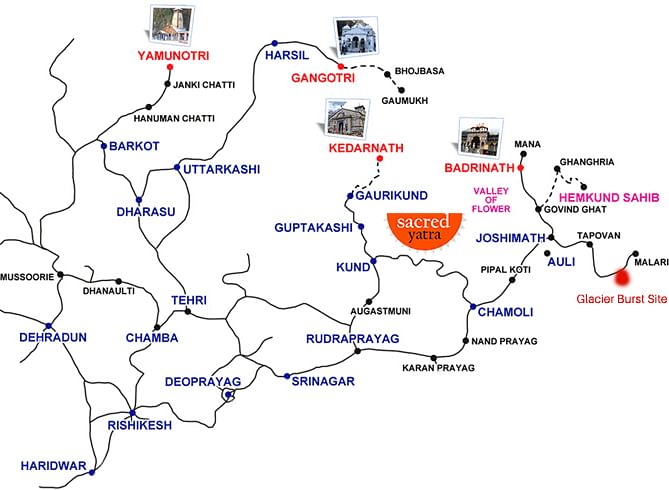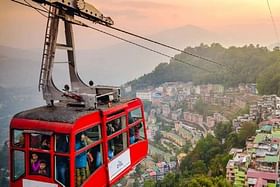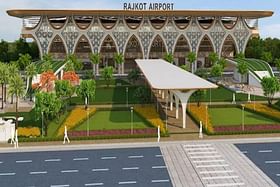It’s been an eventful year for infrastructure sector in India with many successes including opening of two greenfield airports and inauguration of five new Vande Bharat Trains.
2023 is set to be another busy year. Here are some of the most exciting infra projects to watch out for.
1. Delhi-Mumbai Expressway
The new year, will finally set the ball rolling for commissioning of Delhi-Mumbai Expressway (DME).
At nearly 1390 kms, it will be India’s longest expressway and will reduce travel time between Delhi and Mumbai from 24 hours to 13 hours.
The new highway being built at an estimated cost of Rs 103,000 crore originates near Gurugram at Sohna and terminates at Mumbai, traversing through five states, Haryana, Rajasthan, Madhya Pradesh, Gujarat and Maharashtra.
According to the latest package level status, construction of 738 kms of the greenfield expressway is complete.
The Sohna (Haryana)-Dausa (Rajasthan) stretch of the DME is all set to be inaugurated in January 2023 with the complete project likely to finish by the first quarter of 2024.
2. Ganga Expressway
Traversing through 12 districts of Uttar Pradesh, the six-lane (expandable to eight lane) access-controlled expressway would connect the eastern and western parts of Uttar Pradesh.
Being the largest expressway planned in the state, the Ganga expressway is expected to play a key role in Chief Minister Yogi Adityanath’s plan to make Uttar Pradesh into a USD one trillion economy state.
The Uttar Pradesh Expressways Industrial Development Authority (UPEIDA) which is executing the project has already selected two developers- IRB Infrastructure Developers and Adani Enterprises Ltd for the expressway’s development.
The preparatory work on the greenfield expressway is gaining pace, with clearing and grubbing work completed on 500 km out of the total 593.94 km as of December 2022. The expressway is expected to be completed and opened in April 2024.
Once commissioned, the Ganga Expressway, will complete the expressway grid in the state, with interconnection to four operational expressways – Yamuna, Agra-Lucknow, Purvanchal and Bundelkhand.
3. Dedicated Freight Corridors (DFCs)
Indian Railways has undertaken a mega-infrastructure project of two dedicated freight corridors namely Eastern and Western Dedicated Freight Corridors (EDFC & WDFC) to facilitate faster evacuation of freight traffic.
The 1506-km-long WDFC runs from Dadri in Uttar Pradesh to Jawaharlal Nehru Port Trust in Maharashtra, whereas, the 1337-km-long EDFC runs from Ludhiana in Punjab to Sonnagar in West Bengal.
A total route length of 1610 Km (799 Km of EDFC and 811 Km of WDFC) has been commissioned out of total 2843 Km till October, 2022.
Three out of six stretches on EDFC are already operational, with the remaining stretches scheduled to be commissioned in phases by 30 June 2023. For WDFC, the target date of completion has been set at June 2024.
4. Kochi Water Metro
The much-awaited launch of the Kochi Water Metro, the first-of-its-kind in the country, is likely to happen in 2023.
Kochi, often referred as the commercial capital of Kerala, is one of the most densely populated districts in the state of Kerala. The Kochi water metro project envisages the development of 15 identified routes, connecting 10 islands along a network of routes that span 78 kms.
The water metro will cater to a daily ridership of more than 100,000 people and will revive the traditional water train and travel routes once ubiquitous in the city.
The Kochi Metro Rail Limited (KMRL) which is executing the project is expected to begin commercial operation on the High Court-Vypeen and Vyttila-Kakkanad routes soon within a month, with Cochin Shipyard Ltd (CSL) delivering the first batch of five boats.
5. Mumbai Trans Harbour Link (MTHL)
Mumbai Trans Harbour Link (MTHL), the longest sea bridge in India, is expected to open in December 2023.
Connecting Mumbai to Navi Mumbai, the sea link reduces the travel time between South Mumbai and Navi Mumbai to just 20 minutes from the present two hours.
Popularly known as the Sewri Nhava Sheva Harbour Link, the MTHL is a 22-km-long 6-lane bridge, 16.5km of which would be over the sea and about 5.5kms viaduct on land on either side.
As of December 2022, 91 per cent of MTHL’s construction work had been completed. Financed by the Japan International Cooperation Agency (JICA), the project is being implemented by the Mumbai Metropolitan Region Development Authority (MMRDA).
6. Mumbai Metro
The new year will bring much respite to Mumbaikars, as two new metro lines, 2A and 7, color-coded as yellow and red line, are expected to be fully commissioned in January this year.
Metro Line 2A will run from Dahisar to DN Nagar, Andheri West, and Metro Line 7 from Dahisar East to Andheri East. These two new lines will cater to offices and residential areas located at Western Express Highway (WEH) and Link Road in the suburbs of the city.
Apart from this, the Mumbai Metro Rail Corporation (MMRC) is all set to operationalize the first phase – Aarey to BKC – of Metro Line 3 in 2023.
Metro Line 3 is a 33.5-km-long underground corridor along Colaba-Bandra-SEEPZ and would connect Mumbai’s key financial hubs, such as Nariman Point, BKC, Lower Parel, Airport, SEEPZ and MIDC.
Also, the commercial operations on Navi Mumbai Metro (NMM) Line 1 between Pendhar and Belapur is expected to start by January 2023. The NMM Line 1 project is a 11-km-elevated stretch between CBD Belapur and Pendhar in Taloja.
7. Bengaluru Metro
2023 could see a major milestone in the commercial operations of Namma Metro.
The Bangalore Metro Rail Corporation Limited (BMRCL) is likely to commission 40 km of lines under Phase II, thus bringing two major IT corridors – Whitefield and Electronics City on the metro map.
The extended Purple Line from Baiyappanahalli to Whitfield (15 km) and the new Yellow Line from R.V. Road to Bommasandra (19 km) will be opened to the public by mid-2023.
Apart from this Kengeri to Challaghatta of the Purple Line and Hesarghatta Cross to Madavara on the Green Line are also expected to open this year.
8. Navi Mumbai International Airport (NMIA)
The NMIA is an international airport project being executed by City and Industrial Development Corporation (CIDCO) and planned to cater to the growing air travel demand of Mumbai Metropolitan Region (MMR).
The project scope includes development of an international airport (in phases) with a capacity to handle minimum 60 million passengers per annum (MPPA) and 1.5 million tonnes cargo per annum.
Work on the Navi Mumbai airport site is in full swing to meet the December 2024 target.
Land acquisition and rehabilitation for the project-affected have been completed. Land development work and diversion of the Ulwe river and shifting of 220 KV and 110 KV high voltage transmission lines passing through the airport area is also complete.
The project located in Raigad district of Maharashtra will ease the load on the existing Chhatrapati Shivaji Maharaj International Airport (CSMIA) in Mumbai.
9. Noida International Airport (NIA)
NIA is the upcoming greenfield airport at Jewar in Gautam Buddha Nagar district in Uttar Pradesh. It will enhance domestic as well as international connectivity to and from Delhi-NCR, Noida and Western Uttar Pradesh.
The airport, billed to be India’s largest upon completion, will be developed in four phases, after which it would have an annual passenger capacity of 70 million and two terminal buildings, spread across an area of 5,000 acres.
Phase I of the airport which will cater to 12 million passengers annually, has reached 20 per cent progress with the work completed on the aerodrome. As per the concession agreement, the first phase is to be completed and made operational by September 2024.
The airport is being developed by Yamuna International Airport Private Limited (YIAPL), a subsidiary of the Swiss firm Zurich Airport International AG (ZAIA), in close partnership with Government of Uttar Pradesh and Government of India.
10. Delhi-Meerut RRTS
2023 is the year when the country’s first Rapid Rail becomes a reality. The track that will open – 17km from Sahibabad to Duhai – will be 20 per cent of the 82km corridor from Sarai Kale Khan in Delhi to Meerut.
The RRTS project is proposed to link the three cities of Delhi, Ghaziabad and Meerut through high-speed trains, having a design speed of 180 kmph with 160 kmph of operational speed and an average of 100 kmph running speed.
It will be connecting Sarai Kale Khan in Delhi to Modipuram in Meerut in Uttar Pradesh, with 25 stations en route of which 22 are in the jurisdiction of the state of Uttar Pradesh and three in Delhi.
The National Capital Region Transport Corporation (NCRTC), which is building the RRTS, is set to start the trial run on the ‘priority section’ which has four stations — Sahibabad, Ghaziabad, Guldhar and Duhai.
Once the priority section is completed, NCRTC will keep adding new sections in a phased opening of the corridor till 2025.
